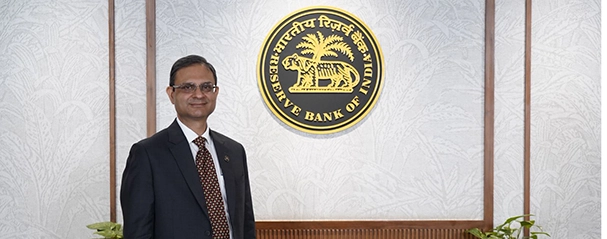Speeches - आरबीआय - Reserve Bank of India
Speeches
It gives me immense pleasure to participate in the FIBAC annual conference for this year. It brings together distinguished thought leaders and stakeholders of the Indian economy and our financial ecosystem to deliberate on critical and contemporary issues facing the economic landscape of our country. The topic of the Conference “Charting New Frontiers” is very relevant and topical as we respond to the new challenges of tariffs and geopolitical uncertainties. I am sure that the discussions in this conference will be very fruitful and provide deeper insights and guidance to all stakeholders, especially businesses, regulators and governments. This is all the more important as we strive to contribute in our journey for a Viksit Bharat by 2047. I compliment FICCI and IBA for organising this annual conference.
It gives me immense pleasure to participate in the FIBAC annual conference for this year. It brings together distinguished thought leaders and stakeholders of the Indian economy and our financial ecosystem to deliberate on critical and contemporary issues facing the economic landscape of our country. The topic of the Conference “Charting New Frontiers” is very relevant and topical as we respond to the new challenges of tariffs and geopolitical uncertainties. I am sure that the discussions in this conference will be very fruitful and provide deeper insights and guidance to all stakeholders, especially businesses, regulators and governments. This is all the more important as we strive to contribute in our journey for a Viksit Bharat by 2047. I compliment FICCI and IBA for organising this annual conference.
Participants of the ‘Management Development Programme on Financial Market Regulations’, Professors, ladies, and gentlemen. A very good morning to all of you! 2. At the outset, I would like to thank IIM, Kozhikode for inviting me here. It is a pleasure to address such a diverse gathering, ranging from policy veterans to important stakeholders across the financial landscape. The contents of programme span the issues around the regulatory framework of a diverse mix of entities operating in the financial markets including banks, securities firms, and insurance entities.
Participants of the ‘Management Development Programme on Financial Market Regulations’, Professors, ladies, and gentlemen. A very good morning to all of you! 2. At the outset, I would like to thank IIM, Kozhikode for inviting me here. It is a pleasure to address such a diverse gathering, ranging from policy veterans to important stakeholders across the financial landscape. The contents of programme span the issues around the regulatory framework of a diverse mix of entities operating in the financial markets including banks, securities firms, and insurance entities.
I am delighted to be present here and be part of this important event on climate change which continues to draw attention in the national and international discourse. I would not dwell in detail about the perils of climate change since this audience is already well aware about its impact not only on the real economy, but also the financial system, as well as our day-to-day lives. Climate related changes are perceptible, clear, and visible. They are intensifying and threatening ecosystems, livelihoods, and economies. It is our individual and collective responsibility, to work together effectively and contribute to the global efforts to mitigate the risks associated with climate change and ensure that the Indian financial system remains resilient.
I am delighted to be present here and be part of this important event on climate change which continues to draw attention in the national and international discourse. I would not dwell in detail about the perils of climate change since this audience is already well aware about its impact not only on the real economy, but also the financial system, as well as our day-to-day lives. Climate related changes are perceptible, clear, and visible. They are intensifying and threatening ecosystems, livelihoods, and economies. It is our individual and collective responsibility, to work together effectively and contribute to the global efforts to mitigate the risks associated with climate change and ensure that the Indian financial system remains resilient.
Digital Payments – Background and benefits 1. Payments are the lifeblood of commerce, enabling the flow of goods and services in an economy. They connect people, empower individuals and businesses, and drive economic growth. Quick, secure and reliable payments at affordable prices are the bedrock for a vibrant economy. Payments through digital modes support economic growth. They also deepen financial inclusion by overcoming barriers like high transaction costs and geographical limitations . In effect, digital payments are not just convenient but are also a powerful tool for economic empowerment and growth.
Digital Payments – Background and benefits 1. Payments are the lifeblood of commerce, enabling the flow of goods and services in an economy. They connect people, empower individuals and businesses, and drive economic growth. Quick, secure and reliable payments at affordable prices are the bedrock for a vibrant economy. Payments through digital modes support economic growth. They also deepen financial inclusion by overcoming barriers like high transaction costs and geographical limitations . In effect, digital payments are not just convenient but are also a powerful tool for economic empowerment and growth.
पेज अंतिम अपडेट तारीख:

















